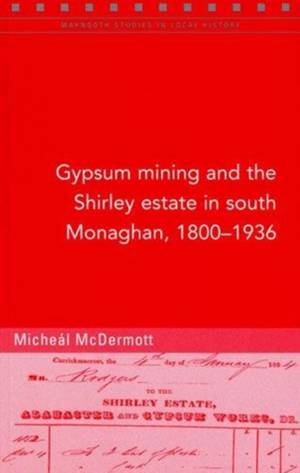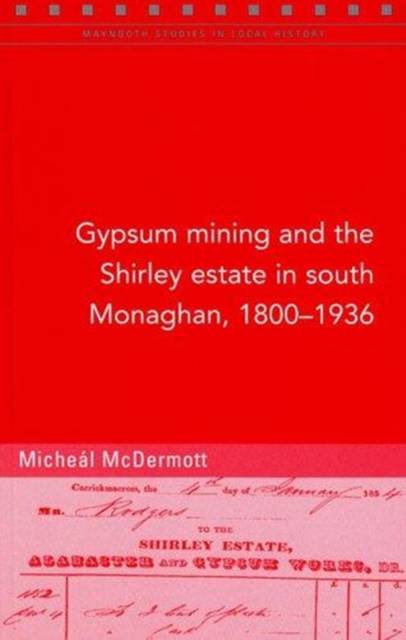
Bedankt voor het vertrouwen het afgelopen jaar! Om jou te bedanken bieden we GRATIS verzending (in België) aan op alles gedurende de hele maand januari.
- Afhalen na 1 uur in een winkel met voorraad
- In januari gratis thuislevering in België
- Ruim aanbod met 7 miljoen producten
Bedankt voor het vertrouwen het afgelopen jaar! Om jou te bedanken bieden we GRATIS verzending (in België) aan op alles gedurende de hele maand januari.
- Afhalen na 1 uur in een winkel met voorraad
- In januari gratis thuislevering in België
- Ruim aanbod met 7 miljoen producten
Zoeken
Gypsum Mining and the Shirley Estate in South Monaghan, 1800-1936
Michael McDermott
€ 13,95
+ 27 punten
Omschrijving
In the early 1800s, a fruitless pursuit of coal on the Shirley estate in south Monaghan led to the discovery and the intermittent exploitation of gypsum on the estate lands. In portraying the inter-related fortunes of the Shirley family, the mines, and their community, this book places this trinity on a journey which is signposted by significant political, social, and economic developments. The changing balance of power between landlord and tenant, as crystallised by the Land Acts and a growing nationalist democracy, had profound implications for this industry. The establishment of the Farney Development Company (1921-27) at Lisnabo, Co. Meath, in the southern section of the gypsum field, was the major result of these changes. Despite the collapse of this company and further initial setbacks, the gypsum enterprise, Gypsum and Bricks, was eventually relaunched in the 1930s. This book owes its compilation to a broad range of sources but it is chiefly indebted to the estate papers of the Shirley family, the records of the Geological Survey of Ireland, and the National Archives, Dublin.
Specificaties
Betrokkenen
- Auteur(s):
- Uitgeverij:
Inhoud
- Aantal bladzijden:
- 64
- Taal:
- Engels
- Reeks:
- Reeksnummer:
- nr. 86
Eigenschappen
- Productcode (EAN):
- 9781846820595
- Verschijningsdatum:
- 15/10/2009
- Uitvoering:
- Paperback
- Formaat:
- Trade paperback (VS)
- Afmetingen:
- 140 mm x 210 mm
- Gewicht:
- 90 g

Alleen bij Standaard Boekhandel
+ 27 punten op je klantenkaart van Standaard Boekhandel
Beoordelingen
We publiceren alleen reviews die voldoen aan de voorwaarden voor reviews. Bekijk onze voorwaarden voor reviews.









